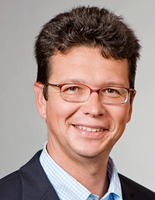Mess- und Sensortechnologie (MS&E)
eLearning-Kurs
Zuordnung zu Modulen:
|
| VO |
2 |
Große, C.
Müller-Buschbaum, P.
|
Mi, 10:00–12:00, virtuell
|
Polymer Physics 2
eLearning-Kurs
Zuordnung zu Modulen:
|
| VO |
2 |
Müller-Buschbaum, P.
Mitwirkende: Körstgens, V.
|
Di, 10:00–12:00, PH II 227
|
Funktionelle weiche Materialien
Zuordnung zu Modulen:
|
| PS |
2 |
Müller-Buschbaum, P.
Papadakis, C.
|
Di, 08:30–10:00, PH 3734
|
Seminar über Neutronen in Forschung und Industrie
aktuelle Informationen
Zuordnung zu Modulen:
|
| PS |
2 |
Märkisch, B.
Morkel, C.
Müller-Buschbaum, P.
Pfleiderer, C.
Mitwirkende: Franz, C.Park, J.
|
Mo, 14:30–16:00, virtuell
|
Exercise to Polymer Physics 2
eLearning-Kurs
Zuordnung zu Modulen:
|
| UE |
2 |
Körstgens, V.
Leitung/Koordination: Müller-Buschbaum, P.
|
Termine in Gruppen
|
Übung zu Mess- und Sensortechnologie (MS&E)
eLearning-Kurs
Zuordnung zu Modulen:
|
| UE |
1 |
Kollofrath, J.
Reitenbach, J.
Leitung/Koordination: Müller-Buschbaum, P.
|
Termine in Gruppen
|
Aktuelle Probleme der organischen Photovoltaik
Zuordnung zu Modulen:
|
| SE |
2 |
Müller-Buschbaum, P.
|
Mo, 10:00–11:30, PH 3734
|
Dozentensprechstunde Polymerphysik 2
Zuordnung zu Modulen:
|
| RE |
2 |
Müller-Buschbaum, P.
|
|
Dozentensprechstunde zu Mess- und Sensortechnologie (MS&E)
Zuordnung zu Modulen:
|
| RE |
2 |
Müller-Buschbaum, P.
|
|
FOPRA-Versuch 42: Rasterkraftmikroskopie
aktuelle Informationen
Zuordnung zu Modulen:
|
| PR |
1 |
Müller-Buschbaum, P.
Mitwirkende: Weindl, C.
|
|
FOPRA-Versuch 61: Neutronenstreuung am FRM II
aktuelle Informationen
Zuordnung zu Modulen:
|
| PR |
1 |
Müller-Buschbaum, P.
Mitwirkende: Georgii, R.
|
|
Führung durch die Forschungs-Neutronenquelle Heinz Maier-Leibnitz (FRM II) für Studierende der Physik
aktuelle Informationen
Zuordnung zu Modulen:
|
| EX |
0.1 |
Leitung/Koordination: Müller-Buschbaum, P.
|
|
Seminar: Polymere
Zuordnung zu Modulen:
|
| SE |
2 |
Müller-Buschbaum, P.
Papadakis, C.
|
Mi, 13:00–15:00, PH 3734
|
Seminar über Struktur und Dynamik kondensierter Materie
Zuordnung zu Modulen:
|
| SE |
2 |
Müller-Buschbaum, P.
Papadakis, C.
|
Di, 13:00–15:00, PH 3734
|
